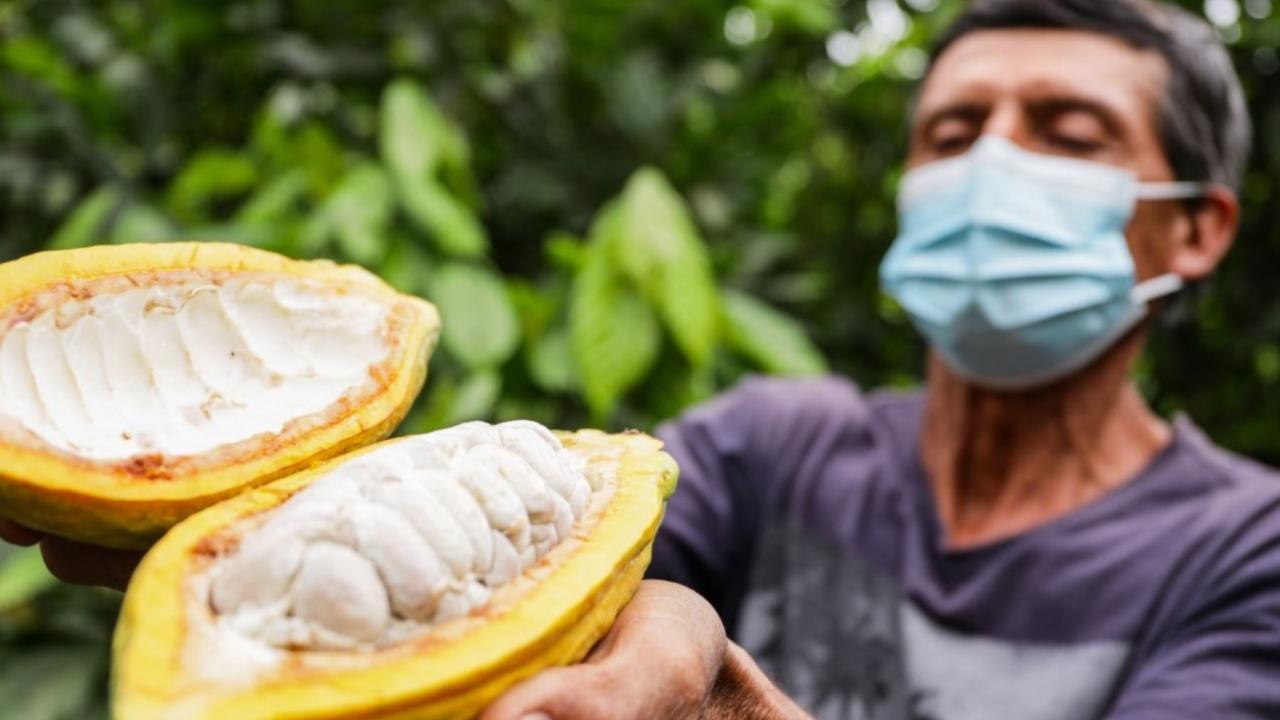
They claim that paying high prices to producers reduced their ability to continue buying.
The international price of cocoa was negotiated this last Friday in a range of between US$8,512 and US$9,940 per ton for delivery in September in the United States, according to the Investing.com portal. These are prices that are moving away from the unprecedented high peaks of last March and April when they reached US$ 12,000, but they are having a rebound again after US$ 7,000 last May, and that still continue to worry the national cocoa export sector that He does not know how to face the purchase of next August's harvest due to lack of resources.
This, despite the fact that according to the latest figures from the Ecuadorian Federation of Exporters (Fedexpor), these prices benefited shipments of Ecuadorian cocoa to all its destinations with a growth of 100% by generating US$ 774 million, from January to May. The exported volume also grew, but only by 23%. The main market for Ecuadorian cocoa is the European Union (EU), which generated US$238 million with a 100% increase in exported value and 55% in volume.
Iván Ontaneda, president of the Board of Directors of the National Association of Cocoa Exporters of Ecuador (Anecacao), recognizes that high prices have initially had a positive effect for the producer, but warns of negative collateral effects for other actors in the chain, for example exporting companies.
"We are marketers, we have had to face a series of internal breaches of contracts that have left us in a precarious situation, we have had to go out and buy cocoa at much more expensive prices to meet our pre-established commitments at the start of the year, exporters make sales with six and eight months in advance, they are not weekly sales, and all this is a direct impact.”
"With these high prices today we do not have the necessary financial capacity to attend to a harvest that is coming around the corner, in August," said Ontaneda.
He assures that with US$ 12,000 per ton the Ecuadorian exporter saw its internal purchasing capacity reduced by 70%, which is why they have asked the State for “financial leverage.”
“This chain starts with the cocoa producers, who do they sell to? The exporter, but with these high prices today we do not have the necessary financial capacity to attend to a harvest that is coming around the corner, in August. ”, he commented.
Although he indicates that the rise in prices is the product of a deficit in production in the two main cocoa producing countries in Africa: Ivory Coast and Ghana, which have a disease in their plantations that affects their productivity, he warns that there is also speculation.
"It is estimated that the deficit is 350,000 tons, which generated an increase in price from US$ 4,500 to US$ 6,000 and it was at that moment that there was a break, because cocoa is a commodity that trades on the stock market and when speculators "Those who perceive this volatility begin to buy papers on the stock market, creating a speculative scale in prices reaching unsuspected limits such as US$12,000," explains Ontaneda.
Meanwhile, Merlyn Casanova, executive director of Anecacao, indicates that after the drop in the international price last May, which reached US$ 7,000 per ton “caused by the profit-taking of speculators in the futures, who liquidated their long positions made months and weeks ago", the price has once again shown an increasing behavior and has reached US$ 8,905 due to the persistence of low production levels in the Ivory Coast and Ghana.
Despite the existing deficit, for Ontaneda, current prices remain overvalued and he hopes that cocoa will seek levels that allow the actors in the chain to coordinate, as he assures that with such high prices, chocolate consumption and the industry are also affected. is suffering. "This is going to cause damage because with such high prices the markets are reduced and our exportable supply would also be affected, that is why we talk about balance."
The president of the Anecacao Board of Directors hopes that until the end of the year prices will remain between US$6,000 and US$8,000 per ton, which he assures are still good prices for cocoa producers and would also give the industry room to work.
Regarding productivity, Ontaneda points out that very rare weather situations have occurred. Remember that last year El Niño delayed the harvest and this year they have had 8% growth, but they are very cold in the field as a result of La Niña. "I could not give an estimate of what will happen to the cocoa harvest in Ecuador this year, we hope that it will remain at the levels of the previous year, this is between 420,000 and 450,000 tons of cocoa."
For Casanova, the good weather conditions that developed in the last months of 2023 and the beginning of 2024 helped the export volumes that occurred between January and May. "Considering this, we predict that by the end of the year we will be able to export around 437,000 tons of cocoa and generate more than US$3 billion for the national economy."









